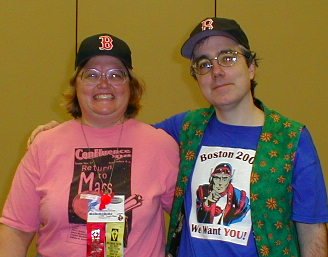Queen of Candesce by Karl Schroeder
The first book told the story of how one group of people traveled to across their world, first to obtain a cache of treasure which contained one of the keys of candesce – a key to the sun of suns – and then traveled to the sun of suns itself to temporarily disable the technology suppression field that it generates. This enabled radio to work for a brief time, which enabled their home fleet to beat back a sneak attack. The story comes to a satisfying conclusion, but it also leaves several loose ends, including the fate of Venera Fanning, the wife of the expedition’s commander and a skillful leader (and at times a ruthless powerbroker) in her own right. Queen of Candesce picks up Venera’s story.
Venera lands on the ancient world of Spyre – the largest existing cylinder in Virga. It is made up of a mishmash of small nations – some as small as a modern office complex – all with complicated rules of interaction, many paranoid and turned inward, and all trying to keep anyone from leaving Spyre or even traveling without permission to less Spyre – the inner wheel/nations within the cylinder of greater Spyre. A group of preservationists – also eccentric and hostile to those outside the group – build railroads across Spyre, not for transportation but to literally preserve Spyre. Spyre is old and decaying, and some parts have broken loose and been flung off into space. The preservationists are trying to balance the rotation by moving heavy objects to the right location, even if it means they must pass through a sometimes hostile sovereign state. Schroeder has done a great job of creating a world that feels like something Jack Vance could have created at his peak. Spyre and the story of Venara’s treck across it is comparable to some of Vance’s most imaginative creation (though Schroeder’s style in describing it is his own).
The story starts with Venera falling to Spyre. She is found by Garth Diamandis, a self described aging gigolo. It follows her and Garth as she ascends from outcast to position of power – a position she needs if she is ever going to be able to go home and payback those who have wronged her and created the situation that presumably killed her husband (last heard of when his ship was destroyed with all hands in the previous book). Along the way, she encounters several strange societies and makes both allies and enemies; the latter includes the nation of Sacrus, who figures out who she is and what she is carrying (the Key of Candesce). The key, which can be used as a political weapon since who holds it also has power over the central sun, becomes a focal point in their struggle.
Eventually, she and Garth come to the last remains of the kingdom of Buridan: a solitary, decaying tower. Venera manages to use this as a way to power, masquerading as the heir to the lost nation and thereby giving her a seat on Spyre’s council. She brilliantly manipulates the council to accept her claim, even though many have their doubts, and alter uses this position in her back and forth with Sacrus.
But Venera’s journey is more than simply of an outcast coming to power. It’s also one of personal growth. As the book opens, she is not only cold blooded but sharply focused on her own ends. She needs to get home and take revenge; nothing else matters, and she’ll do anything and betray anyone to get their. But as the book progresses, she becomes more and more entwined with Garth around her, and picks up more and more obligations to the people she is leading. She finds that she can no longer simply abandon them to pursue her own ends.
Like Sun of Suns, Queen of Candesce brings its main story – Venera’s power stuggle on Spyre and her rise to power there – to a satisfying conclusion. And like the previous book, it still leaves the next step – Venera’s return home – to the next volume. This is another fine novel by Schroeder. I only wish we didn’t have to wait another year for the next part.

